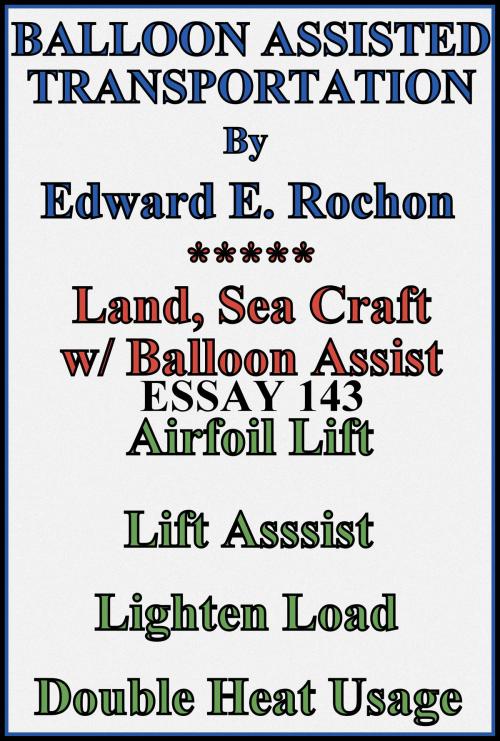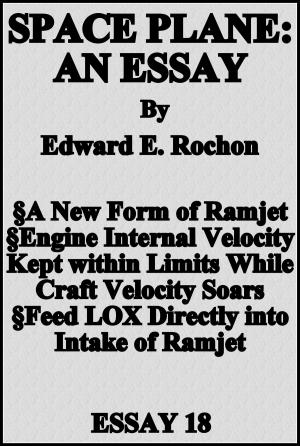Balloon Assisted Transportation
Nonfiction, Science & Nature, Science, Physics, Mechanics, Reference & Language, Transportation, Automotive| Author: | Edward E. Rochon | ISBN: | 9781370611751 |
| Publisher: | Edward E. Rochon | Publication: | September 27, 2017 |
| Imprint: | Smashwords Edition | Language: | English |
| Author: | Edward E. Rochon |
| ISBN: | 9781370611751 |
| Publisher: | Edward E. Rochon |
| Publication: | September 27, 2017 |
| Imprint: | Smashwords Edition |
| Language: | English |
A brief preface wonders if we are too fixated on flight with lighter than air lift. Might assisting cars and ships by lightening reduce energy expenditure to transport things? Chapter 1 discusses cars and land vehicles. We discuss the frame, nature of balloons, offering light gases or heated gases as options as well as heated light gases. We mention difficulties. We note the blimp type balloons or traditional balloons are not expedient here. We use balloons that have airfoil lift when the car is in motion. We can expand or collapse the balloons as required to allow for parking. We can deflate them to decrease hydroplaning when needed. Chapter 2 discusses ships. Here, we both lift the ship out of the water and ease forward motion. We may alter the inflated airfoils to act as sails when conditions merit this. We discuss safety and the use of cables to distribute the weight of the ship across the balloon surfaces. The ship funnels supply the heat for hot air. In Chapter 3 we note some drawbacks and benefits for using this method in military vehicles. We discuss safety matters again and repeat the summary of reason why this might be a good idea to improve fuel efficiency, weight capacity for land and sea vehicles.
A brief preface wonders if we are too fixated on flight with lighter than air lift. Might assisting cars and ships by lightening reduce energy expenditure to transport things? Chapter 1 discusses cars and land vehicles. We discuss the frame, nature of balloons, offering light gases or heated gases as options as well as heated light gases. We mention difficulties. We note the blimp type balloons or traditional balloons are not expedient here. We use balloons that have airfoil lift when the car is in motion. We can expand or collapse the balloons as required to allow for parking. We can deflate them to decrease hydroplaning when needed. Chapter 2 discusses ships. Here, we both lift the ship out of the water and ease forward motion. We may alter the inflated airfoils to act as sails when conditions merit this. We discuss safety and the use of cables to distribute the weight of the ship across the balloon surfaces. The ship funnels supply the heat for hot air. In Chapter 3 we note some drawbacks and benefits for using this method in military vehicles. We discuss safety matters again and repeat the summary of reason why this might be a good idea to improve fuel efficiency, weight capacity for land and sea vehicles.















